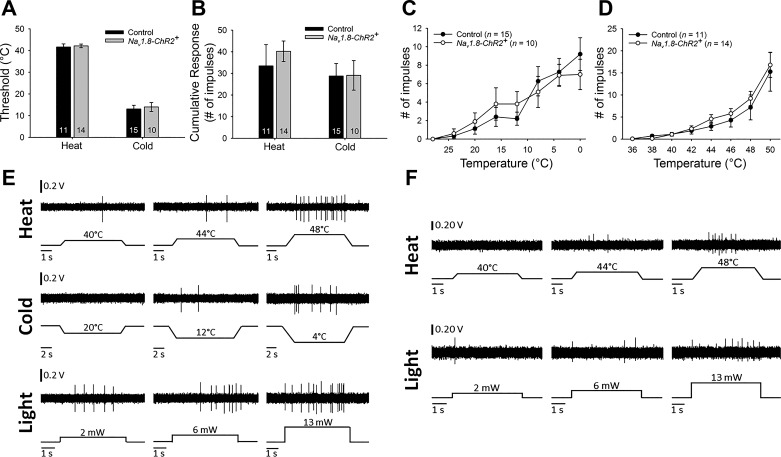Fig. 2.
Responses to thermal stimuli did not differ between control and Nav1.8-ChR2+ mice. A: means ± SE response thresholds of C-fibers responsive to heat and/or cold did not differ between control and Nav1.8-ChR2+ mice. B: means ± SE cumulative responses of C-fibers responsive to heat and/or cold did not differ between control and Nav1.8-ChR2+ mice. C: responses to a range of temperatures did not differ for cold-responsive C-fibers in control (n = 15) and Nav1.8-ChR2+ (n = 10) mice. D: responses to a range of temperatures did not differ for heat-responsive C-fibers in control (n = 11) and Nav1.8-ChR2+ (n = 14) mice. E: representative examples of evoked responses of a light-responsive C-mechanoheatcold nociceptor fiber. Top: responses to 5-s heat stimuli of increasing temperature; middle: responses to 10-s cold stimuli of decreasing temperature; bottom: responses to 5-s light stimuli of increasing intensity. F: evoked responses from a single light-responsive CH fiber. Top: responses to 5-s heat stimuli of increasing temperature; bottom: responses to 5-s light stimuli of increasing intensity.

